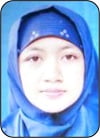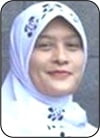BIPA Learning Material Development for Empowering Thailand Students’ Writing Competence
Abstract
Abstract: Thai students have come and studied at the UMP (Muhammadiyah University of Purwokerto) in Central Java, Indonesia. So, “Bahasa” Indonesia (Indonesia language) is needed as a communicative language to deliver lecture. “Bahasa” Indonesia has important role, either nationally or internationally, because foreign students are interested in studying here. The foreign learners study the “Bahasa” Indonesia as second language (foreign language) with the academic and practical purposes. BIPA stands for “Bahasa Indonesia untuk Penutur Asing” (Teaching Indonesian Language for Non-Native Speaker) develops in UMP to fulfill the need of foreign students. The study was aimed at analyzing language aspect difficulties on writing paper and developing BIPA material to improve students’ writing competence. This article highlight the process nine Thai students on their writing process. The data were collected through paper and writing task in first semester. The mistake classifications are word reduplication, the usage of “n”, “m”, “f”, and “v”, English word, the confusing between “ng” and “g”, the affix mistakes, the mistakes of “a”, “i”, “u”, “e”, and “o”. Syllabus and BIPA learning material to support them understanding “Bahasa” Indonesia well. Most Thai students tried hard to master “Bahasa” Indonesia for their study here.There are two suggestions to develop BIPA learning material: it needs a good methodology and learning material; so, the teacher can manage it well and a further research beside the writing skill itself.
KEY WORDS: Thai students, Indonesian language, difficulties, foreign language, writing skill, syllabus development, and learning material.


About the Authors: Laily Nurlina and Eko Sri Israhayu are Lecturers at the Faculty of Education and Teacher Training UMP (Muhammadiyah University of Purwokerto), Jalan Raya Dukuhwaluh, Purwokerto City, Central Java, Indonesia. For academic purposes, the authors can be contacted via e-mails at: march_nur@yahoo.co.id and ayuisrahayu@yahoo.co.id
How to cite this article? Nurlina, Laily & Eko Sri Israhayu. (2014). “BIPA Learning Material Development for Empowering Thailand Students’ Writing Competence” in EDUCARE: International Journal for Educational Studies, Vol.7(1) August, pp.57-66. Bandung, Indonesia: Minda Masagi Press and UMP Purwokerto, ISSN 1979-7877.
Chronicle of the article: Accepted (March 20, 2014); Revised (May 30, 2014); and Published (August 17, 2014).
Full Text:
PDFReferences
Arsyad, Azhar. (2011). Media Pembelajaran. Jakarta: PT Raja Grafindo Persada.
Belawati, Tian. (2003). Pengembangan Bahan Ajar. Jakarta: Penerbit UT [Universitas Terbuka].
Cohen, M. & M. Riel. (1989). “The Effect of Distant Audiences on Students' Writing” in American Educational Research Journal, 26(2), pp.143-159.
Cresswell, John. (2010). Research Design: Qualitative, Quantitative, and Mixed Approaches. California: SAGE Publications.
Dardjowidjojo, Soenjono. (1994). Sentence Patterns of Indonesia. Hawaii: University of Hawaii Press.
Ellis, Rod. (1986). Understanding Second Language Acquisition. New York: Oxford University Press.
Eltis, K.J. (1991). A Genre-Based Approach to Teaching Writing in Years 3-6. Australia: Commond Ground Publisher.
Hastuti, Sri. (1989). Sekitar Analisis Kesalahan Berbahasa Indonesia. Yogyakarta: PT Mitra Gama Widya.
Hayes, J.R. & L.S. Flower. (1986). “Writing Research and the Writing” in American Psychologist, 41(10), pp.1106 -1113.
Hidayat, S. Kosadi. (1998). Kemampuan Mahasiswa Asing pada Jurusan Pendidikan Bahasa dan Sastra Indonesia dalam Membaca Wacana Bahasa Indonesia. Bandung: Penerbit UPI [Universitas Pendidikan Indonesia] Press.
Ismorosiyadi. (2011). “Pengertian Makalah”. Available [online] also at: http://ismorosiyadi.blogspot.com/2011/12/pengertian-makalah.html [accessed in Purwokerto, Indonesia: May 21, 2014].
Kentjono, Djoko et al. (2004). Tata Bahasa: Acuan Bahasa Indonesia untuk Penutur Asing. Jakarta: Wedatama Widya Sastra.
Littlejohn, Andrew. (1991). Writing 1. Australia: Cambridge University Press.
Norrish, John. (1983). Language Learners and Their Errors. London: The Macmillan Press.
Nurgiyantoro, Burhan. (2010). Model Penilaian Otentik dalam Pembelajaran Bahasa. Yogyakarta: Unit Percetakan dan Penerbitan UNY [Universitas Negeri Yogyakarta].
Sadiman, Arief S. et al. (2008). Media Pendidikan. Jakarta: PT Raja Grafindo Persada.
Sanjaya, Wina. (2008). Kurikulum dan Pembelajaran: Teori dan Praktik Pengembangan Kurikulum Tingkat Satuan Pendidikan (KTSP). Bandung: Penerbit Kencana.
Sneddon, James Neil. (1996). Indonesian Reference Grammar. NSW, Australia: Allen & Unwin Pty Ltd.
Straus, Corbin. (2009). Dasar-dasar Penelitian Kualitatif. Yogyakarta: Pustaka Pelajar, Translation.
Suhardjono. (2006). “Pengembangan Profesi Guru dan Karya Tulis Ilmiah”. Available [online] also at: http://ptkguru.wordpress.com/2008/05/20/karya-tulis-ilmiah-dan-pengembangan-profesi-guru/ [accessed in Purwokerto, Indonesia: May 21, 2014].
Sunendar, D. (2000). “Alternatif Materi Pelajaran BIPA Tingkat Pemula” in Proceedings KIPBIPA III. Bandung: Penerbit Andira.
Suyanto. (2009). “Kendala Linguistis Penutur Asing dalam Belajar Bahasa Indonesia”. Available [online] also at: http://staff.undip.ac.id/ [accessed in Purwokerto, Indonesia: December 21, 2013].
Suyata, P. (2000). “Model Alat Ukur Evaluasi BIPA” in Prosiding Konferensi Bahasa Indonesia bagi Penutur Asing (KIPBIPA) III. Bandung: UPI [Universitas Pendidikan Indonesia].
Widjono, H.S. (2005). Bahasa Indonesia. Jakarta: PT Grasindo.
EDUCARE: International Journal for Educational Studies. Ciptaan disebarluaskan di bawah Lisensi Creative Commons Atribusi-BerbagiSerupa 4.0 Internasional
